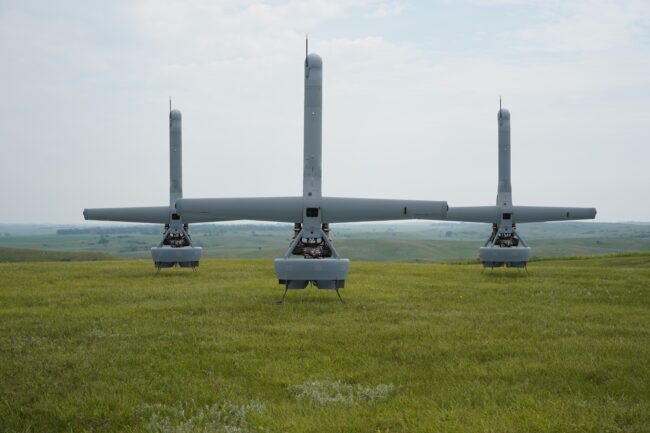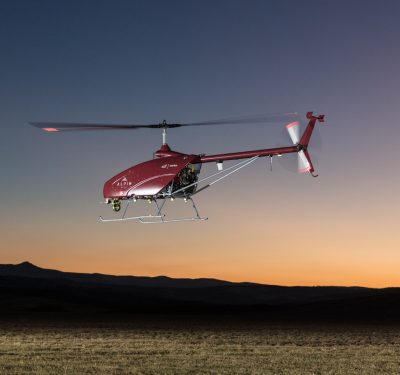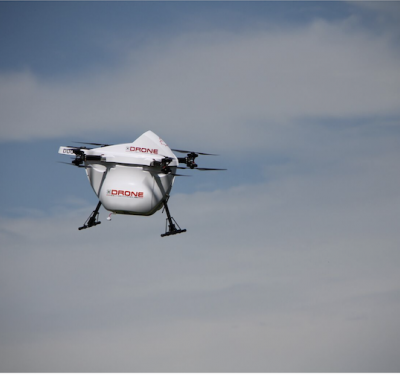
“Wait, you’re flying those three aircraft, doing the recon and at the same time briefing us?”
That’s what Shield AI President and co-founder Brandon Tseng heard during a late-August autonomous teaming demonstration that showcased the company’s Hivemind AI pilot by launching a team of three V-BAT UAS to surveil simulated wildfires.
Hivemind has been operational since 2018 on Shield’s AI-piloted Nova quadcopters, autonomously executing missions in GPS- or comms-denied situations. But on Oct. 9, Shield announced that V-BAT teams powered by Hivemind could now be purchased, to operate autonomously over electronically contested battlespaces, starting in 2024.
Inside Hivemind
“Hivemind is a software framework that delivers resilient and portable artificial intelligence capabilities,” said Willy Logan, Shield AI’s director of engineering. Run by a modular Nvidia CPU, Hivemind interfaces directly with the V-BAT autopilot. “What we’re trying to do is move to the step where autonomy is committed to behaviors and humans are prioritizing tasks,” Logan said. “Based on the task input from a human operator, such as ‘find a target in this search area,’ Hivemind will autonomously drop waypoints and build out a mission plan. The input in Hivemind is all the aircraft sensor data, which Hivemind uses to perceive the environment and build a global map. A cognition engine then allows Hivemind to make decisions on the best action plan for one or multiple V-BATs.”
Hivemind operates around three pillars. Autonomy development involves mapping, vehicle direction and tasking, again without GPS, waypoints or comms. Training includes avoiding false positives or threats. “You need to be able to ‘fly, fix and fly, ‘ and build trust,” Logan said.
Then comes feedback. “We can take Hivemind and apply it to other people’s platforms, specifically in the group four and five areas. With EO/IR ATR [automatic target recognition] solutions, he said, “we have the ability to automatically control that payload so we can zoom in/out and adjust for brightness or contrast. The key is to move all these actions typically completed by a human operator in a ground station to the aircraft on the edge. ATR information is fed back to Hivemind, and the mission plan is continuously updated. If the ATR solution says, ‘hey, that’s a target,’ that information is passed down to the human operator on the ground to decide on the next task.”
MOSA and Maritime ISR
Platform agnostic, Hivemind aligns with the increasingly widespread Modular Open Systems Approach (MOSA), which integrates capabilities without being locked into specific vendors. “Hivemind’s software lives on hardware, and that hardware will be integrated with regard to all the sensors that allow it to perceive,” Logan said.
The V-BAT 128 (now known as Block A) has been deployed with Marines on Navy ships and in SOUTHCOM, the U.S. Southern Command.
“A much smaller boat could carry three, four of these V-BATS to search large swaths in complicated waters for specific targets,” Logan said. “We’re trying to get to a point where we have all cameras looking for a threat and a human doesn’t have to watch those cameras anymore. He has basically one screen, it’s blank until the threat is perceived and then he can decide how to act on it.”
To this end, Shield is collaborating with Sentient Vision of Australia, whose ViDAR optical solution has a wide-area search capability.
“Our focus,” Logan said, “is to be able to field V-BAT teams that are able to autonomously search, detect, track and report efficiently.”





